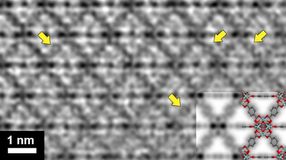Double meaning in genetic code
Scientists have discovered a second code hiding within DNA. This second code contains information that changes how scientists read the instructions contained in DNA and interpret mutations to make sense of health and disease.
A research team led by Dr. John Stamatoyannopoulos, University of Washington associate professor of genome sciences and of medicine, made the discovery. The findings are reported in the Dec. 13 issue of Science. The work is part of the Encyclopedia of DNA Elements Project, also known as ENCODE. The National Human Genome Research Institute funded the multi-year, international effort. ENCODE aims to discover where and how the directions for biological functions are stored in the human genome.
Since the genetic code was deciphered in the 1960s, scientists have assumed that it was used exclusively to write information about proteins. UW scientists were stunned to discover that genomes use the genetic code to write two separate languages. One describes how proteins are made, and the other instructs the cell on how genes are controlled. One language is written on top of the other, which is why the second language remained hidden for so long.
"For over 40 years we have assumed that DNA changes affecting the genetic code solely impact how proteins are made," said Stamatoyannopoulos. "Now we know that this basic assumption about reading the human genome missed half of the picture. These new findings highlight that DNA is an incredibly powerful information storage device, which nature has fully exploited in unexpected ways."
The genetic code uses a 64-letter alphabet called codons. The UW team discovered that some codons, which they called duons, can have two meanings, one related to protein sequence, and one related to gene control. These two meanings seem to have evolved in concert with each other. The gene control instructions appear to help stabilize certain beneficial features of proteins and how they are made.
The discovery of duons has major implications for how scientists and physicians interpret a patient's genome and will open new doors to the diagnosis and treatment of disease.
"The fact that the genetic code can simultaneously write two kinds of information means that many DNA changes that appear to alter protein sequences may actually cause disease by disrupting gene control programs or even both mechanisms simultaneously," said Stamatoyannopoulos.
Most read news
Organizations
Other news from the department science

Get the life science industry in your inbox
By submitting this form you agree that LUMITOS AG will send you the newsletter(s) selected above by email. Your data will not be passed on to third parties. Your data will be stored and processed in accordance with our data protection regulations. LUMITOS may contact you by email for the purpose of advertising or market and opinion surveys. You can revoke your consent at any time without giving reasons to LUMITOS AG, Ernst-Augustin-Str. 2, 12489 Berlin, Germany or by e-mail at revoke@lumitos.com with effect for the future. In addition, each email contains a link to unsubscribe from the corresponding newsletter.






















































